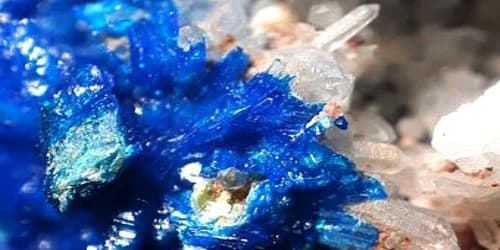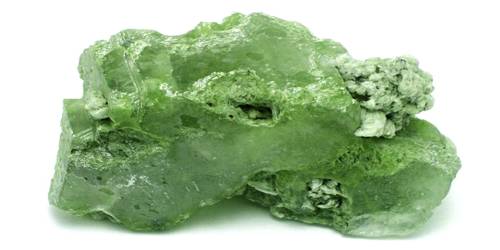Arseniosiderite (formula- Ca2Fe3+3(AsO4)3O2·3H2O) is a rare arsenate mineral formed by the oxidation of other arsenic-containing minerals, such as scorodite or arsenopyrite. It is a rare secondary mineral formed by the oxidation of earlier arsenic-bearing minerals, typically scorodite or arsenopyrite. It is not radioactive.
It was named for the composition of arsenic and iron after the Greek word for “iron,” sideros. Arseniosiderite is an uncommon mineral that forms a secondary mineral via the oxidization of early arsenic minerals, usually scorodite and/or arsenopyrite.
General Information
- Category: Arsenate mineral
- Formula: Ca2Fe3+3(AsO4)3O23H2O
- Crystal system: Monoclinic
- Crystal class: Prismatic (2/m).

Properties
Arseniosiderite can be identified in the field by its color variations, such as bronze-brown, yellow, yellow-brown, dark brown, and black. Its translucent to opaque form has {100} good cleavage. This mineral has a sub-metallic luster, with the ochraceous streak.
The density of arseniosiderite is 3.5 to 3.9 g/cm3 with a hardness of 1.5 – between talc and gypsum. It is non-fluorescent.
- Formula mass: 766.50 g/mol
- Color: Bronze brown; yellow to black
- Crystal habit: Fibrous
- Mohs scale hardness: 4.5
- Luster: Submetallic
- Streak: Ochraceous
- Diaphaneity: Translucent to opaque
- Specific gravity: 3.5–3.9, average = 3.7
- Optical properties: Biaxial (-)
Occurrence
Arseniosiderite occurs as a rare secondary mineral, formed by the oxidation of earlier arsenic-bearing minerals such as scorodite or arsenopyrite.
It occurs in association with beudantite, carminite, dussertite, pharmacolite, pesticide, adamite, and erythrite. The name arseniosiderite reflects two major elements of the mineral, arsenic, and iron.
Localities for Arseniosiderite include in France, Austria, Germany, England, Greece, Namibia, the United States, Mexico, Bolivia, and Australia, among several others. Associated minerals include beudantite, carminite, scorodite, dussertite, pharmacolite, pesticide, adamite, erythrite, arsenopyrite, and lollingite.
Information Source:
















